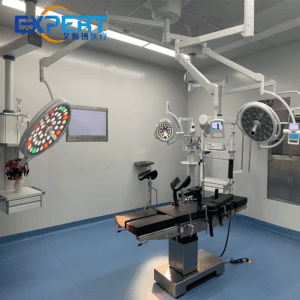Address
304 North Cardinal St.
Dorchester Center, MA 02124
Work Hours
Monday to Friday: 7AM - 7PM
Weekend: 10AM - 5PM
Operating tables have undergone a remarkable evolution over the years, driven by advancements in medical technology and a deep understanding of surgical needs. From rudimentary platforms to intricate, multi-functional instruments, the journey of operating tables is a testament to human ingenuity. In this comprehensive exploration, we delve into the intricate evolution of operating tables, highlighting their transformation into sophisticated tools that play a pivotal role in modern surgery.

Operating tables, once basic structures for patients during surgery, have evolved into intricate systems that complement the complexities of modern medical procedures. The journey from simple wooden boards to advanced, technologically integrated platforms has revolutionized surgical practices and patient outcomes.
The history of operating tables dates back centuries, with early examples found in ancient civilizations such as Egypt and Greece. These early tables were basic, often made from stone, wood, or even marble. Functionality was limited, and patient comfort was secondary to the surgeon’s convenience. As medical knowledge advanced, the need for improved operating tables became evident.
The Renaissance marked a turning point in the evolution of operating tables. Surgeons like Ambroise Paré introduced innovative designs that emphasized patient positioning and comfort. Wooden tables with adjustable features emerged, allowing surgeons to optimize patient posture for various procedures. However, these designs were still rudimentary compared to the capabilities of modern operating tables.
The late 19th and 20th centuries saw a surge in medical technological advancements, which inevitably influenced operating table design. Hydraulic systems were introduced, enabling smoother adjustments and enhancing patient comfort. With the advent of imaging technologies, operating tables began incorporating X-ray compatibility, aiding surgeons in real-time visualization during surgery.
The evolution of operating tables paralleled the specialization of surgical disciplines. Orthopedics, neurosurgery, and cardiovascular procedures demanded unique positioning requirements. Modern operating tables are equipped with interchangeable components that cater to specific procedures, allowing surgeons to tailor the table to each patient’s needs.
Patient safety took center stage as operating tables evolved. Advanced locking mechanisms prevent unintended movements during surgery, while ergonomic designs minimize surgeon fatigue during prolonged procedures. The introduction of electronic controls and motorized adjustments further refined the precision and convenience of modern operating tables.
 Infection control became a critical consideration in operating room design. Modern operating tables feature seamless designs with antimicrobial surfaces, preventing the accumulation of fluids and contaminants. Easy-to-clean materials and efficient drainage systems contribute to maintaining sterile environments and reducing the risk of post-operative infections.
Infection control became a critical consideration in operating room design. Modern operating tables feature seamless designs with antimicrobial surfaces, preventing the accumulation of fluids and contaminants. Easy-to-clean materials and efficient drainage systems contribute to maintaining sterile environments and reducing the risk of post-operative infections.
The trajectory of operating table evolution points toward even greater integration of technology. Robotic-assisted positioning, AI-driven customization, and virtual reality interfaces are poised to redefine surgical precision and efficiency. Enhanced connectivity with other medical devices will lead to seamless data exchange and streamlined procedures.
Early operating tables were basic structures made from materials like wood, stone, and marble. Patient comfort was secondary to surgeon convenience, and functionality was limited.
Modern operating tables have evolved to incorporate advanced materials, adjustable features, technological integration, specialization for different procedures, patient safety enhancements, infection control measures, and increased customization.
Technology has played a pivotal role in operating table evolution, introducing hydraulic systems, imaging compatibility, electronic controls, and motorized adjustments. Future trends include robotic assistance, AI-driven customization, and virtual reality interfaces.
Modern operating tables prioritize patient safety through advanced locking mechanisms, ergonomic designs, and antimicrobial surfaces. These features minimize the risk of complications and infections during surgery.
The future of operating tables involves further integration of technology, such as robotics, AI, and virtual reality. These advancements will reshape surgical precision, patient outcomes, and overall procedural efficiency.
The evolution of operating tables mirrors the relentless progress of medical science and technology. From humble beginnings, operating tables have matured into sophisticated instruments that embody precision, safety, and patient-centric care. As we peer into the future, the synergy between technology and surgical expertise promises a new era of operating tables that will continue to redefine the boundaries of modern medicine.
